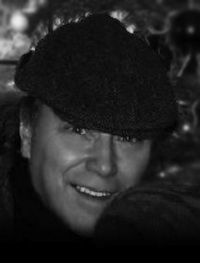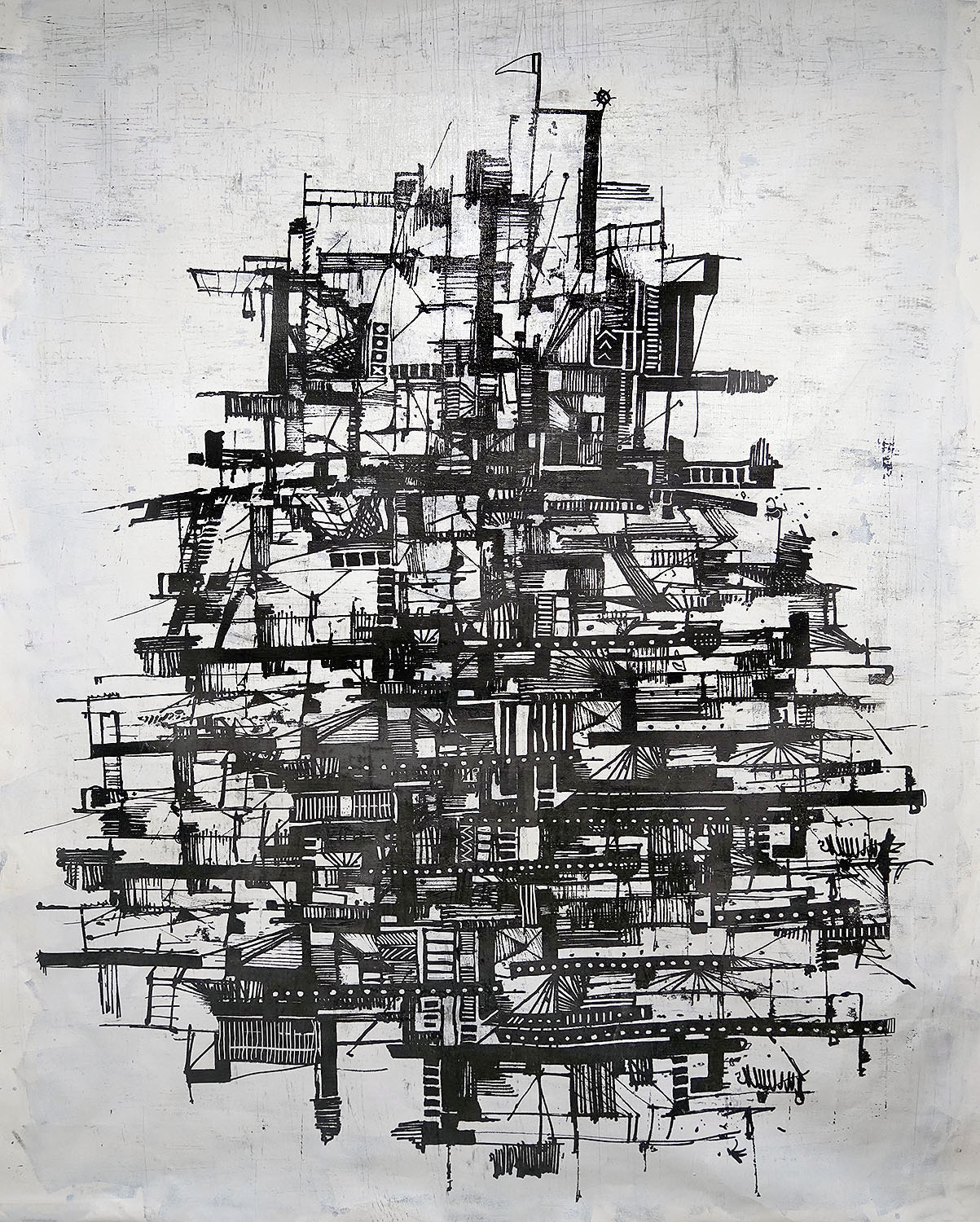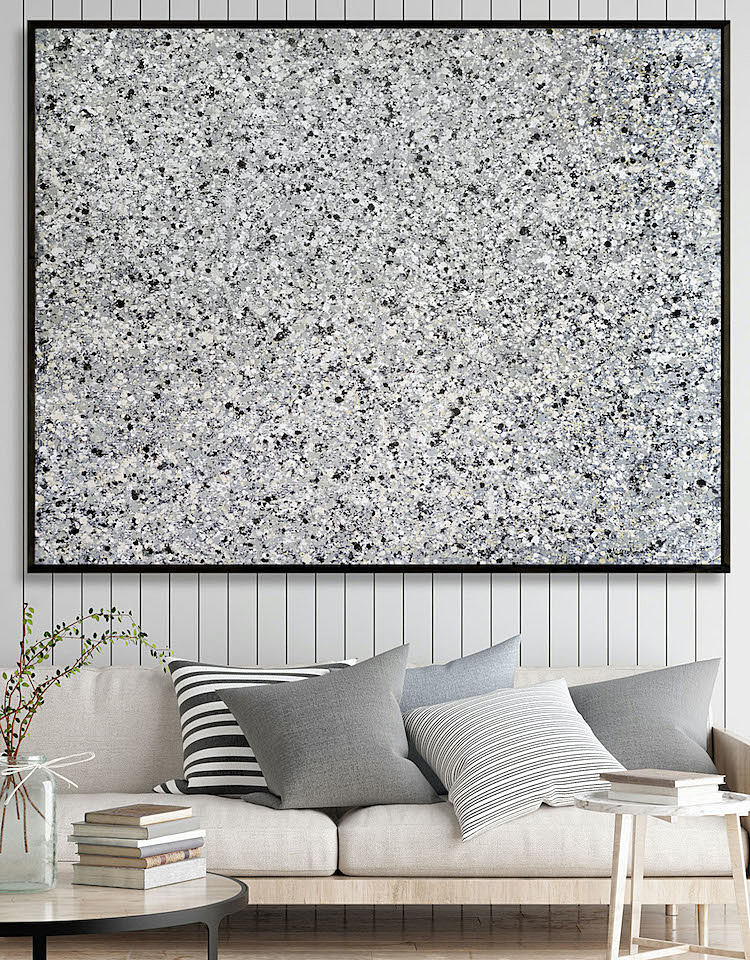
JPP: I imagine I would have been better served by concentrating on one career. If my main goals in life were the pursuit of fame and fortune, I might have latched onto something more conventional and concentrated on being the best I could possibly be in one field. For better or worse, that's not how I'm wired. I've always been compelled to search continuously for new challenges and to immerse myself in activities that I love in the moment rather than pursue false long-term stability. Fortunately, I've been able to combine my diverse passions for the visual arts, digital imaging, writing, and technology into interwoven endeavors that have been personally fulfilling if not economically rewarding.
After temporarily shelving the sequel for my first novel entitled "Rattle" and a handful of other writing projects, since the Covid-19 pandemic I've turned most of my energy and time back to the visual arts world where I've been working with both alternative mixed media, contemporary painting, and aggregating digital art elements into other more traditional art forms.
Background
An avid photographer since my late teens, I began investigating alternative art forms in my twenties in a makeshift B&W darkroom with taped windows and chemical slosh trays. Years later I explored Cibachrome and alternative processes in a larger studio, performing chemical-based image transfers to every imaginable substrate from silk and metal to clay or clothes. It was during this period when I started to combine photos, painting and drawing elements into mixed-media works since no single medium consistently provided the expressive flexibility I sought. Profound influences during that period include Robert Rauschenberg’s "combines", the early print specialists and several forms of print transfers . The eighties NYC art scene offered a plethora of tangents. Even in the beginning, with influences as diverse as Basquiat, Jenny Holzer, Barbara Kruger, and John Baldessari, I had uncontrollable urges to add words and phrases to my visual art, not unlike many of the post moderns. For me, it was an early struggle to define the best vehicle for each expression. I also new that I would probably be spending the rest of my life going in many different directions simultaneously.

In the late 80s and early 90s, I worked as a correspondent for an English-language international newspaper in South America as well as a features writer for a weekly magazine serving the English-speaking Caribbean readership published in Caracas. Exhaustive research and reporting provided a treasure trove of personalities, story lines, and concepts from which I continue to draw today.
As a journalist, I was liberated to witness the world from both sides of cultural and social divides. While not always pretty, the respect I hold for many who inspired me carries forth in my work to this day as I strive for message transparency and aesthetic integrity. I'm captivated by all forms of communication and search for methods to unite them so that no inclinations are denied. I often recall a comment by Pablo Picasso who stated, "...while reading a book one feels that the author would have preferred to paint rather than write; one can sense the pleasure he derives from describing a landscape or a person, as if he were painting what he is saying, because deep in his heart he would have preferred to use brushes and colors." I can safely say that I've often had the reverse impulse to ramble with excessively verbose descriptions when a simple yet profund image would have sufficed!
In the 90s, parallel to bill-paying careers in publishing, digital imaging and photography, I produced dozens of short written works, poetry, and prose. I also had the opportunity to assist a number of fine art galleries working alongside some of Latin America's and North America's leading contemporary artists. While primarily "self-taught" in the traditional sense, my art-world education has been as enlightening as anyone's. Dozens of renowned artists, architects, professors, and photographers became my unofficial mentors at various times in the journey, offering personal guidance while opening my eyes to numerous real-world techniques and concepts that are difficult to teach in a classroom simply because they need to be observed and practiced first hand. This led to the adoption of a mixed-media approach and a combination of real, imagined, and implied imagery. I continue to search for methods to incorporate diverse influences to allow my works to converse with different viewers and readers on multiple planes. It is not uncommon for a group of people upon viewing my work to derive radically different interpretations of my vision and intent behind the work as well as the reasons for the execution within it.
The art and literature worlds of the 21st century have assumed much broader footprints and now readily synthesize the organic with the synthetic, static and dynamic, high and low art, digital with analog, and visual with verbal. This explosion leaves me with many more questions to answer. I feel each advance allows me a fresh opportunity to re-emerge through different concepts, media, and techniques. Luckily, I see no limits.
Today and Beyond
I can spend dozens of hours at a time using my Cintiq drawing tablet or combing through terabytes of old photos, news scraps, or scanned objects searching for just the right piece to incorporate into current works. Not only does this create a wealth of opportunities and tangents to pursue, by using my own accumulated visual elements, my work remains tethered and grounded. It may not be easily detected by the viewer, but the works are inherently related to me simply through the choices I make. And by being ambiguous to others, they are free to explore my work aesthetically and intellectually based on their own similar observations and relationships.

200x150cm work from the Habitat Series (acrylic paint, markings, tablet drawing & printed pigment inks)
There are other days where I just want to get dirty. I love flinging paint as a block breaker. Eventually I will start focusing on a contrast, a pattern or a visual conflict. Something often leaps from a canvas that warrants further exploration. This process is central to the latter versions of the Weights of Memories series, a cathartic physical process that culminates in inspiring yet purely abstract works.

Weight of Memories Series ('Controlled Random' physical process acrylic paintings) 2021-2023



